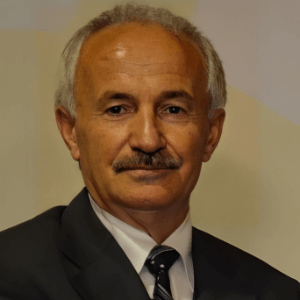Title : Lattice vibrations and atomic reactions governing reversible behavior of shape memory alloys
Abstract:
Metals and alloy systems have different phases at different temperatures and these phases are described in phase diagrams depending on the alloy composition. A series of alloy systems, shape memory alloys exhibit a peculiar property called shape memory effect at the β-phase region with chemical compositions. These alloys are very sensitive to external conditions, and crystal structures turn into other crystal structures with the movement of atoms with variation of temperature and stressing. Lattice vibrations (phonons), atomic bonds and interatomic interactions play an important role in the processing of transformation. Shape memory effect is initiated on cooling and deformation, and performed thermally on heating and cooling, with which shape of the materials cycles original and deformed shapes in reversible way. Therefore, this behavior can be called thermoelasticity. This deformation is plastic deformation, and strain energy is stored in material and released on heating, by recovering the original shape. This phenomenon is governed by the stimulus-induced crystallographic transformations, thermal and stress induced martensitic transformations. Thermal induced martensitic transformations occur on cooling with cooperative movements of atoms in <110 > -type directions on the {110} - type planes of austenite matrix, by means of lattice invariant shear, along with lattice twinning reactions, and ordered parent phase structures turn into twinned martensite structures. The twinned structures turn into detwinned martensite structures by means of stress induced transformation by stressing the material in the low temperature condition. These alloys exhibit another property called superelasticity, which is performed in only mechanical manner by stressing material in elasticity limit in parent phase region just over austenite finish temperature, and recover the original shape upon releasing, by exhibiting elastic material behavior. Stress-strain profile exhibits nonlinear behavior, stressing and releasing paths are different, and hysteresis loops refer to energy dissipation.
Superelasticity is also result of stress induced martensitic transformation and ordered parent phase of the alloy turns into the detwinned martensitic structure with stressing.
Copper based alloys exhibit this property in metastable β-phase region. Lattice invariant shear and twinning is not uniform in these alloys, and gives rise to the formation of layered structures, like 3R, 9R or 18R depending on the stacking sequences on the close-packed planes of the ordered lattice.
In the present contribution, x-ray diffraction and transmission electron microscopy (TEM) studies were carried out on copper based CuZnAl and CuAlMn alloys. X-ray diffractograms and electron diffraction patterns exhibit super lattice reflection. X-ray diffractograms taken in a long-time interval show that locations and intensities of diffraction peaks change with the aging time at room temperature, and this result refers to the rearrangement of atoms in diffusive manner.
Keywords: Shape memory effect, martensitic transformation, superelasticity, twinning, detwinning, and lattice invariant shear.
Audience Take Away:
Shape memory effect is a multidisciplinary subject from physics, chemistry to materials sciences and metallurgy. Shape memory alloys are functional advanced materials and used shape memory devices in biomedical and other applications. I will introduce the details on thermoelasticity and superelasticity.




